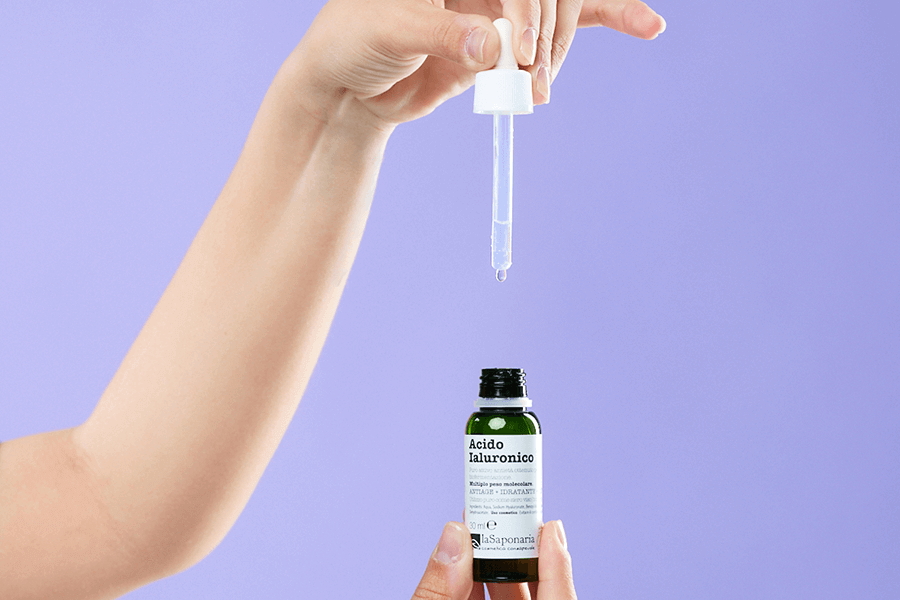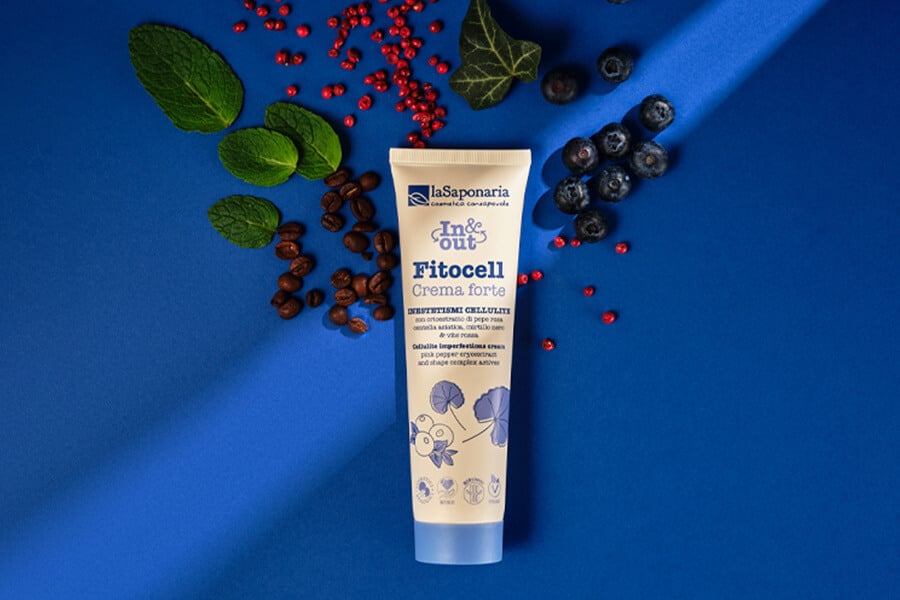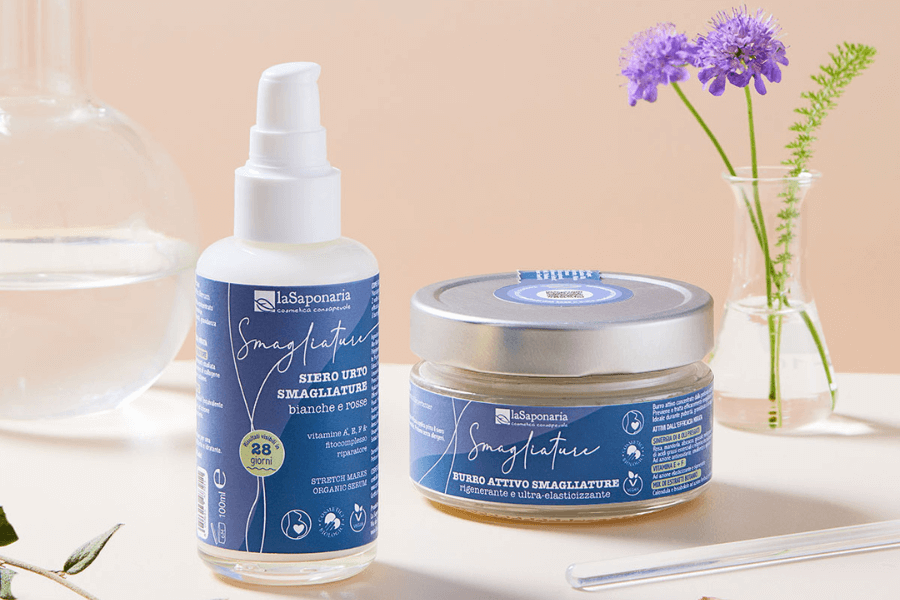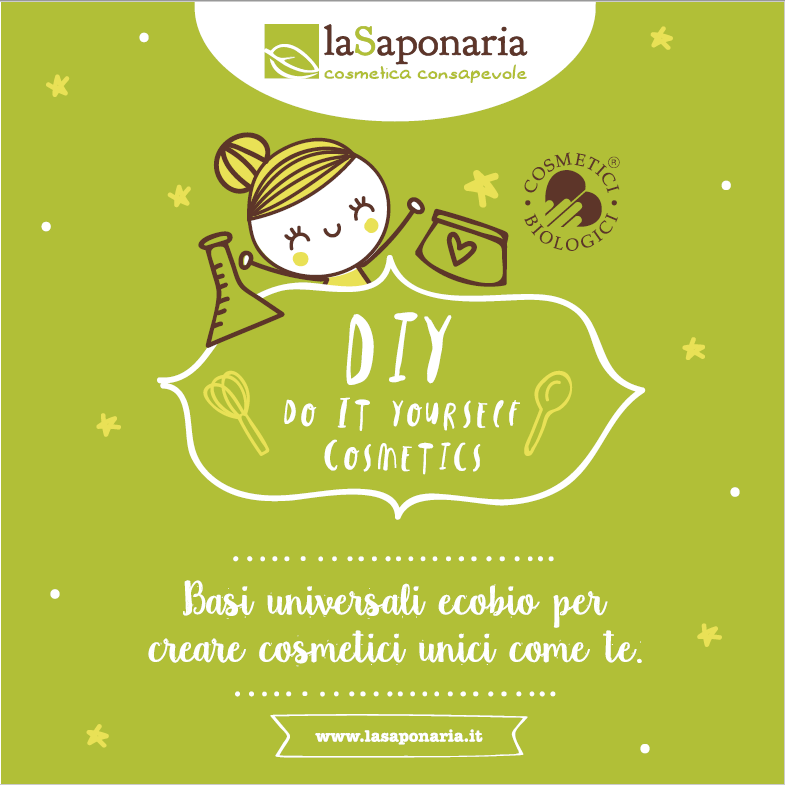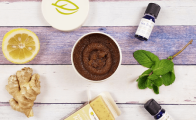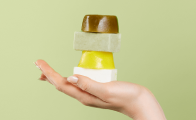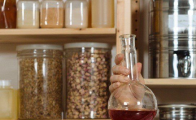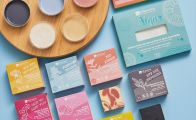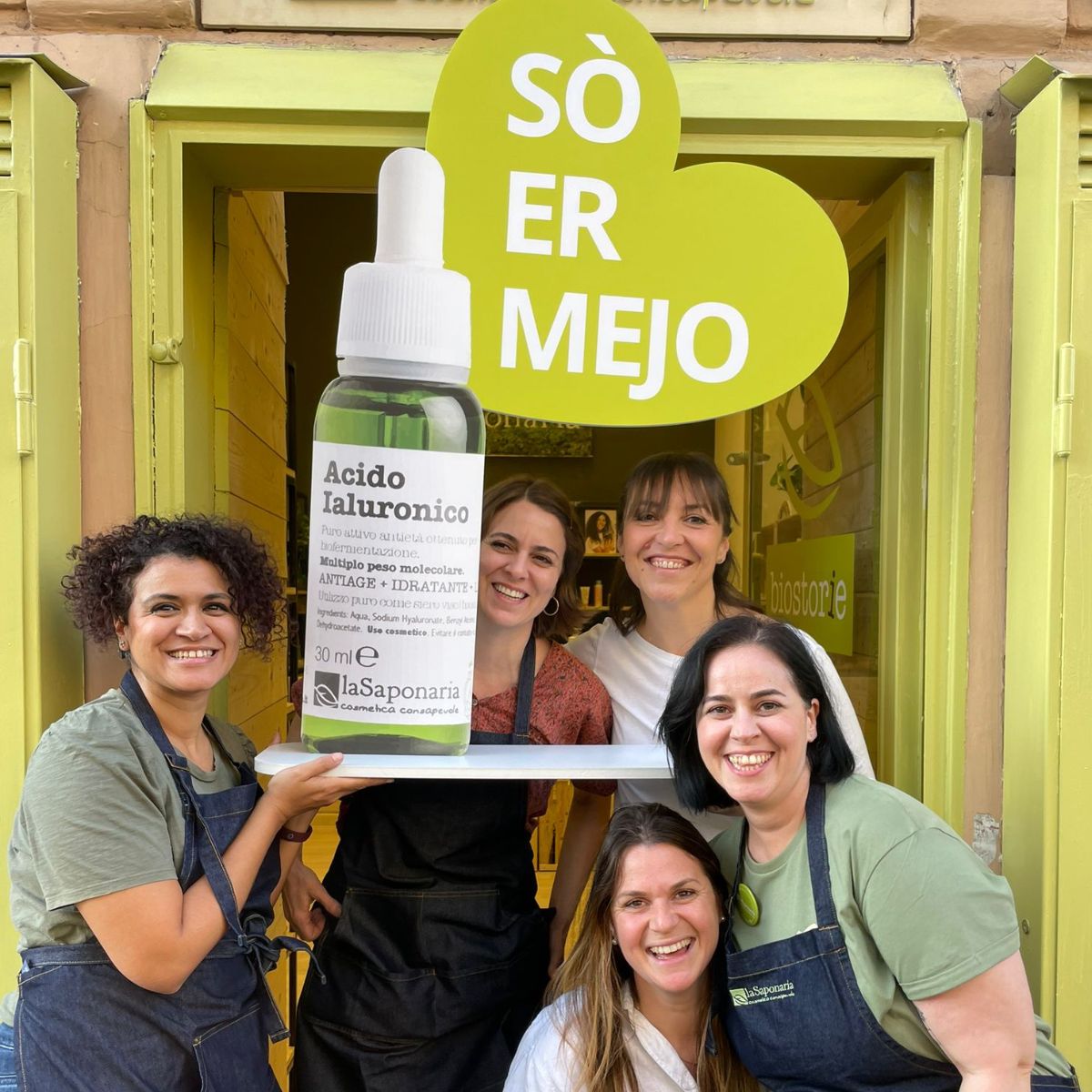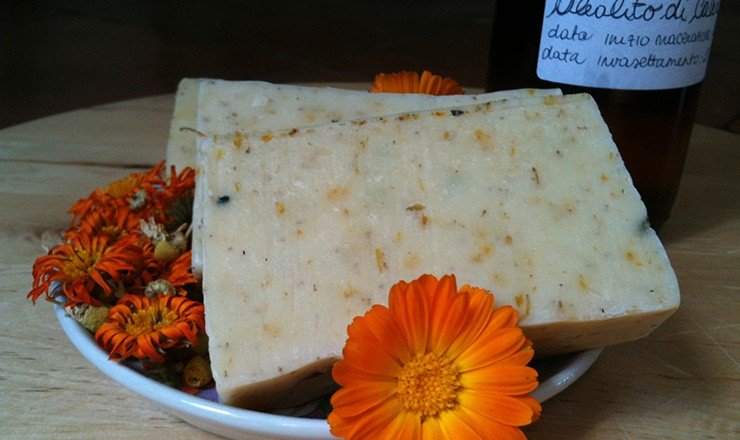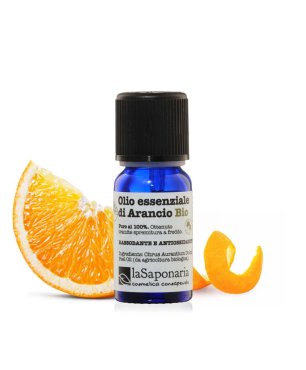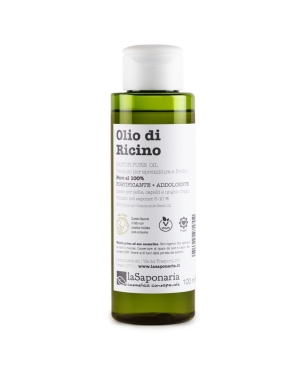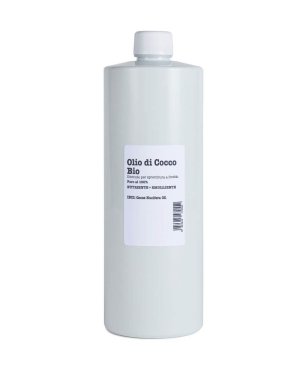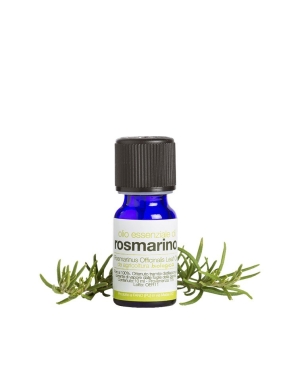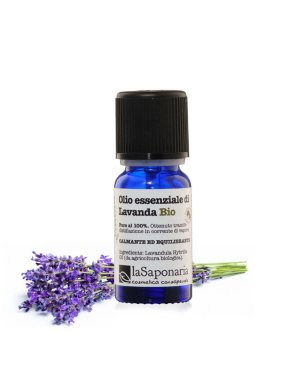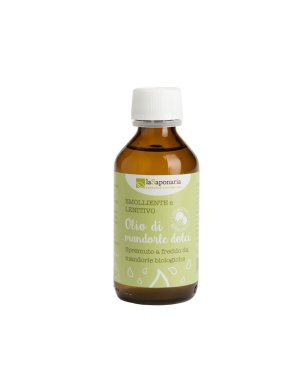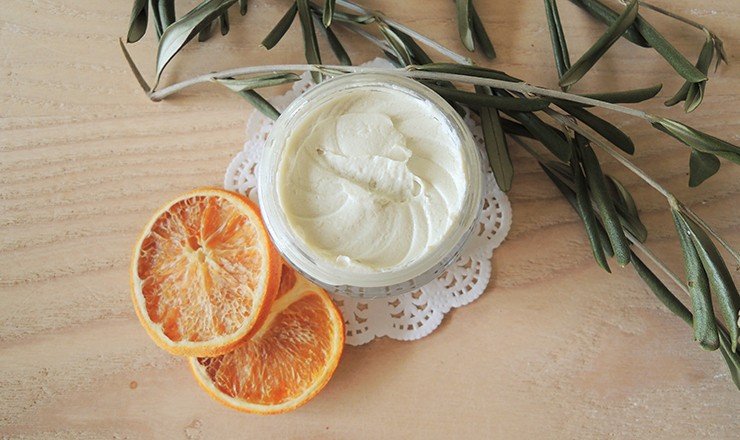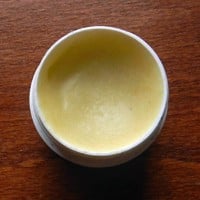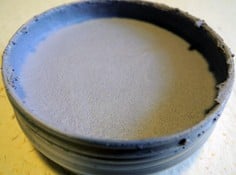- 650g of olive oil;
- 150g of sweet almond oil;
- 100g of Coconut Oil;
- 50g of Castor Oil;
- 50g of Calendula oleolite in olive oil (self-produced);
- 300g of marigold and chamomile infusion (two spoons for each flower);
- 129g of Caustic Soda (already discounted by 6%);
- 1 spoon of Sweet Orange E.O. ;
- 30-40 drops Rosemary E.O.;
- 30 drops Lavender E.O.;
- 2 spoons of corn starch as a fixative for essential oils;
- 2 spoons of crushed calendula and chamomile flowers;
- 1 or 2 teaspoons of turmeric (for coloring)
We offer you another recipe that Laura has experimented for us: calendula and chamomile soap, emollient and anti-inflammatory, suitable for delicate skin!
But let's hear what our self-producing friend tells us:
”I would like to share with you one of my first recipes for home-made natural soaps. Driven by the desire to create a soap to use in the shower, that would avoid me buying shower gel and above all that would respond to the needs of my skin, I formulated this recipe thinking of one of my favorite flowers and which is best suited to my needs: the calendula. In fact, the main ingredient of this recipe is the marigold oil, very easy to self-produce at home, which embodies the anti-inflammatory, antiseptic and emollient properties of this beautiful flower; combined with the Chamomile infusion, it makes this soap suitable for those like me who have delicate skin, which tends to dry out and get irritated very easily. "
Preparation
In order to prepare this soap I used the cold, easy, fast and classic method, combining the aqueous solution with the mix of oils when both had reached the temperature of 45 ° C.
I added turmeric by passing it through a colander and I joined the two parts. Finally, I incorporated the marigold oil, crushed flowers and essential oils fixed with starch at the time of the soap tape.
I decided to combine the oil with the soap paste in the final stage of processing to prevent the oil properties of the flower from being damaged by the high temperatures of the reaction.
A note on coloring: the color of turmeric tends to fade a lot once the soap cools, so to have a color tending to orange it is better to abound with the spice, otherwise use other natural dyes that give the desired effect. The same observation applies to the fragrance, I personally prefer soft and light colors and unobtrusive fragrances; but everyone is free to unleash their imagination and adapt the recipe to their needs!
How to use
Designed as a shower soap.
Thanks to Laura for sharing her recipe with us! If you also have recipes to share you can do it by filling out this form, to find out about all those who have collaborated to grow this organic recipe book click here.
We also remind you that all the recipes published by "independent" authors have not been personally tested in the LaSaponaria laboratory and therefore, for clarifications and specific information on the formulas, we invite you to contact the authors directly by inserting your comment on this post!
- Acacia
- Active Coal
- Allantoin
- Aloe Vera
- Altea
- Alumina
- Amla
- Ammonium Lauryl Sulfate
- Andiroba
- Apricot Oil
- Argan
- Arginine
- Arnica
- Astragalus
- Astrocaryum Murumuru
- Avocado Oil
- Azelaic Acid
- Babassu
- Bacopa
- Bamboo
- Baobab
- Basil
- Beeswax
- Behenamidopropyl Dimethylamine
- Bentonite Clay
- Benzoic Acid
- Benzyl Alcohol
- Benzyl Benzoate
- Benzyl Salicylate
- Bergamot
- Beta-Caryophyllene (BCP)
- Betaine
- Bhringraja
- Biosaccharide Gum-1
- Biotin
- Bisabolol
- Bitter Orange
- Bixa Orellana
- Blueberry
- Boswellia
- Brassica Campestris/Aleurites Fordi Oil Copolymer
- Burdock
- Buriti Oil
- Butcher's broom extract
- C13-15 Alkane
- Calcium Sulphate
- Camphor
- Candelilla Wax
- Cane sugar
- Caprylic Capric Triglyceride
- Caprylyl Capryl Glucoside
- Carbomer
- Carnauba Wax
- Carrot extract
- Carvone
- Cassia
- Castor
- Centella Asiatica extract
- CeramosidesTM
- Cetearyl Glucoside
- Cetearyl Olivate
- Cetyl Palmitate
- Cetylstearyl Alcohol
- Chicory Prebiotic
- Chlorophyll
- Cinnamal
- Cinnamic Acid
- Cinnamon Essential Oil
- Cinnamyl Alcohol
- Citral
- Citric Acid
- Citronellol
- Clove Essential Oil
- Cocamidopropyl Betaine
- Coco Caprylate/Caprate
- Coco Glucoside
- Coco-Caprylate
- Cocoa
- Coconut Oil
- Codonopsis Pilosula
- Coenzyme Q10
- Coffea
- Copper
- Cornflower
- Coumarin
- Craft Beer
- Crespa Spicata Mint
- Cypress
- Damask Rose
- Dehydroacetic Acid
- Denatured Alcohol
- Dextrin
- Diatomaceous Earth
- Dicaprylyl Carbonate
- Dicaprylyl Ether
- Dill
- Disodium Caproyloyl Glutamate
- Distearoylethyl Dimonium Chloride
- Dodecanoic Acid
- Ectoine
- Emblica
- Ethyl Lauroyl Arginate HCl
- Ethylhexyl Stearate
- Ethylhexylglycerin
- Eucalyptus
- Eugenol
- Extra virgin olive oil
- Farnesol
- Fenugreek
- Flax seed
- Fructooligosaccharides
- Fructose
- Fruit Oligosaccharides
- Fumaria
- Galactoarabinan
- Gamma Oryzanol
- Geraniol
- Geranium
- Geranyl acetate
- Ginger
- Ginkgo Biloba Extract
- Gliceril Stearato Citrato
- Gliceril Stearato SE
- Gluconolactone
- Glucose
- Glycerin
- Glyceryl Caprylate
- Glyceryl Oleate
- Glycolic Acid
- Grapefruit
- Green Clay
- Green Tea
- Guar gum
- Hawthorn and Jasmine of Arabia phytocomplex
- Helichrysum
- Hemp
- Henna
- Henné
- Hexapeptide
- Hibiscus
- Hippophae Rhamnoides Fruit Oil
- Holy Basil
- Honey
- Hop
- Horsetail
- Hyaluronic Acid
- Hydrogenated Starch Hydrolysate
- Hydroxyapatite
- Hydroxystearic/Linolenic/Oleic Polyglycerides
- Hypericum
- Hypericum extract
- Indigo
- Inulin
- Iris
- Iron Oxides
- Isoamyl Laurate
- Isoeugenol
- Ivy
- Jojoba
- Juniper
- Juniper Essential Oil
- Lactate Zinc
- Lactic Acid
- Laurel Oil
- Lauryl Glucoside
- Lauryl Olivate
- Lavender
- Lecithin
- Lemon
- Lemon balm
- Lemongrass
- Lemongrass
- Lespedeza
- Leuconostoc/Radish Root Ferment Filtrate
- Licorice
- Limes
- Limonene
- Linalool
- Linden
- Linoleic Acid
- Liquid Crystal Emulsifier
- Lotus flower
- Macadamia Oil
- Madder extract
- Magnesium Aluminum Silicate
- Magnesium Oxide
- Magnesium Stearate
- Magnesium Sulphate
- Malic Acid
- Mallow
- Maltodextrin
- Mango
- Manioc
- Marigold
- Marine Fermented Extracts
- Marjoram Essential Oil
- Menthol
- Menthyl Lactate
- Mica
- Millet
- Mint Campestre
- Moringa
- Multi prebiotic of Ginger, Grape, Incense
- Myrtle essential oil
- Natural Hydrosaccharide
- Neem Oil
- Nettle
- Niacinamide
- Non-silicone silicone
- Oat
- Officinal Phytocomplex
- Olivamidopropyl Betaine
- Olive Glycerides
- Olive Sorbitan
- Organic Wheat Bran Enzymatic Extracts
- Oryzanol
- Panthenol
- Patchouli essential oil
- PCA Glyceryl Oleate
- Pea synergistic extract
- Pentylene Glycol
- Peppermint
- Perfume
- Phenethyl Alcohol
- Phenoxyethanol
- Phytoretinol
- Pichia Ferment Lysate Filtrate
- Pilosella
- Pineapple
- Pinene
- Pink Pepper
- Plant Collagen
- Polisaccaride naturale
- Polisaccaridi naturali
- Polyglycerin-6
- Polyglyceryl-3 Polyricinoleate
- Polyglyceryl-3 Rice Branate
- Polyglyceryl-4 Caprate
- Polygonum Cuspidatum
- Polyhydroxystearic Acid
- Pomegranate
- Pongamia
- Poppy seeds
- Potassium Hydroxide
- Potassium Rapeseedate
- Potassium Rapeseedate
- Potassium Sorbate
- Propanediol
- Propylene Glycol
- Red Grapes
- Repairing Phytocomplex
- Resveratrol
- Rice Bran Oil
- Rice Powder
- Rice Starch
- Rice Wax
- Rosehip
- Rosehip Oil
- Rosemary
- Rubia
- Saccharide Isomerate
- Saccharomyces Polypeptide
- Sacha Inchi
- Salicylic Acid
- Salvia
- Scots Pine
- Scutellaria Baicalensis
- Seaweed
- Seine
- Selenium
- Shea
- Shikimic Acid
- Silica
- Soap Plant
- Sodium Alkyl Sulphates
- Sodium Anisate
- Sodium Benzoate
- Sodium Bicarbonate
- Sodium Carboxymethyl Starch
- Sodium Chloride
- Sodium Citrate
- Sodium Coco-Glucoside Tartrate
- Sodium Coco-Sulfate
- Sodium Cocoyl Glutamate
- Sodium Dehydroacetate
- Sodium Hydroxide
- Sodium Lactylate
- Sodium Lauroyl Glutamate
- Sodium Lauroyl Lactylate
- Sodium Lauroyl Sarcosinate
- Sodium Levulinate
- Sodium Olivamphoacetate
- Sodium Phytate
- Sodium Pyrrolidone Carboxylic Acid
- Solidago
- Solidago Extract
- Sorbic Acid
- Sorbitol
- Soy
- Spirulina
- Squalane
- Star anise
- Stearic Acid
- Stearoyl Glutamate Sodium
- Succinic Acid
- Sucrose Dilaurate
- Sucrose Laurate
- Sucrose Palmitate
- Sucrose Stearate
- Sugar Beet
- Sugar Maple Extract
- Sunflower
- Sweet Almonds
- Sweet Orange
- Tamarind
- Tamarindus Indica Seed Polysaccharide
- Tangerine
- Tapioca
- Tartaric Acid
- Tea Tree essential oil
- Terpineol
- Tetradecanol
- Tetrasodium Etidronate
- Thyme
- Tin Oxide
- Titanium Dioxide
- Tocopherol
- Tocopherol Acetate
- Tomato
- Triethyl Citrate
- Trisodium Dicarboxymethyl Alaninate
- Turmeric
- Undecanol
- Vanilla
- Venere Rice active water
- Vetiver
- Viola Tricolor
- Vitamin B2
- Vitamin C
- Vitamin E
- Vitamin F
- Walnut husk
- Wheat germ
- Wheat Protein
- White Clay
- White Tea Tree essential oil
- Witch hazel
- Xanthan Gum
- Xylitol
- Yarrow
- Ylang ylang
- Zinc
- Zinc Gluconate
- Zinc Oxide
- Zinc Ricinoleate

